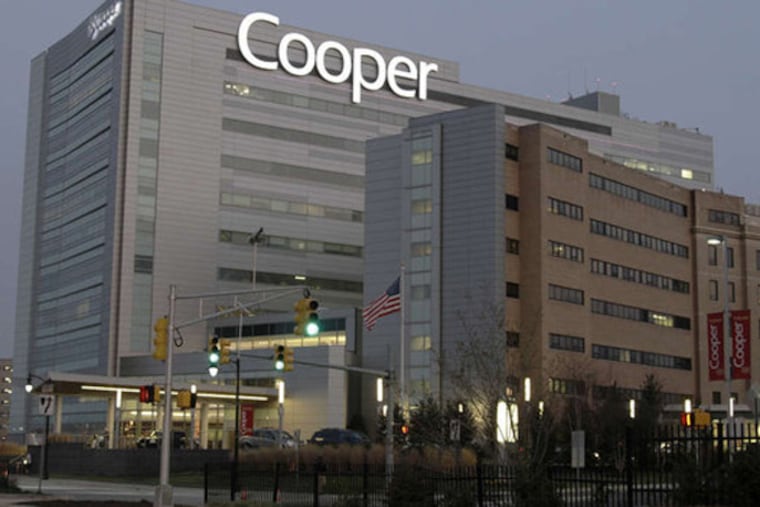Data on death rates: Two community hospitals edge out Cooper
In the debate about whether Cooper University Hospital should take over ambulance services in Camden, a spokesman for hospital board chairman George E. Norcross III has implied that seriously injured patients would be best served by paramedics from a Level 1 trauma center such as Cooper.

In the debate about whether Cooper University Hospital should take over ambulance services in Camden, a spokesman for hospital board chairman George E. Norcross III has said that seriously injured patients would be best served by paramedics from a Level 1 trauma center such as Cooper.
"If you were seriously injured, would you want your first care to come from the region's only Level 1 trauma center or a community hospital?" spokesman Dan Fee told The Inquirer on Wednesday.
Yet the vast majority of patients picked up by ambulance are not trauma or injury victims, but patients suffering from heart problems, strokes, and other acute illness.
And in the most recent federal evaluations of non-trauma care, Cooper fared worse by one measure than each of the two community hospitals that are part of the debate: Virtua, which currently handles emergency transport in Camden, and Our Lady of Lourdes Medical Center, which receives 29 percent of Camden's transported patients.
The federal Centers for Medicare and Medicaid Services tracks death rates in hospital patients with five common conditions. Cooper's performance on all five was in line with national averages, while Virtua and Lourdes each beat the average on one of the five.
At three of Virtua's hospitals, which are lumped together as one in the federal data, 12.5 percent of Medicare stroke patients died within 30 days of admission during the most recent period available.
This rate, which represents Virtua facilities in Voorhees, Berlin, and Marlton, was deemed significantly better than the national average of 15.3 percent.
(Virtua Memorial in Mount Holly, which was rated separately, was equivalent to the national average on all five death rates.)
Cooper's death rate for stroke patients, on the other hand, was 14.4 percent - statistically even with the national average. The data were reported for the period July 1, 2010, to June 30, 2013.
Meanwhile at Our Lady of Lourdes, 8.1 percent of Medicare patients with pneumonia died within 30 days of admission - significantly better than the national average of 11.9 percent.
Cooper's death rate among pneumonia patients was 12 percent, which the government said was essentially even with the national average.
In a follow-up conversation Thursday, Fee acknowledged that most patients are not trauma patients, and said that if Cooper were to assume control of ambulance services, the quality of emergency medical care would not change for that majority of patients.
He said that having Cooper paramedics should improve care for the minority that suffer from trauma and serious injury, because there would be a "continuum of care" with Cooper paramedics handing off to the hospital's trained trauma clinicians.
Asked about the data on death rates, he said it was inappropriate to use those numbers to evaluate the hospital's emergency care, as they reflect treatment of people who have been admitted to the hospital.
Virtua's paramedics already take 69 percent of patients to Cooper, and about 29 percent to Lourdes. Only a handful go to Virtua's own hospitals because they are not nearby.
215-854-2430
@TomAvril1